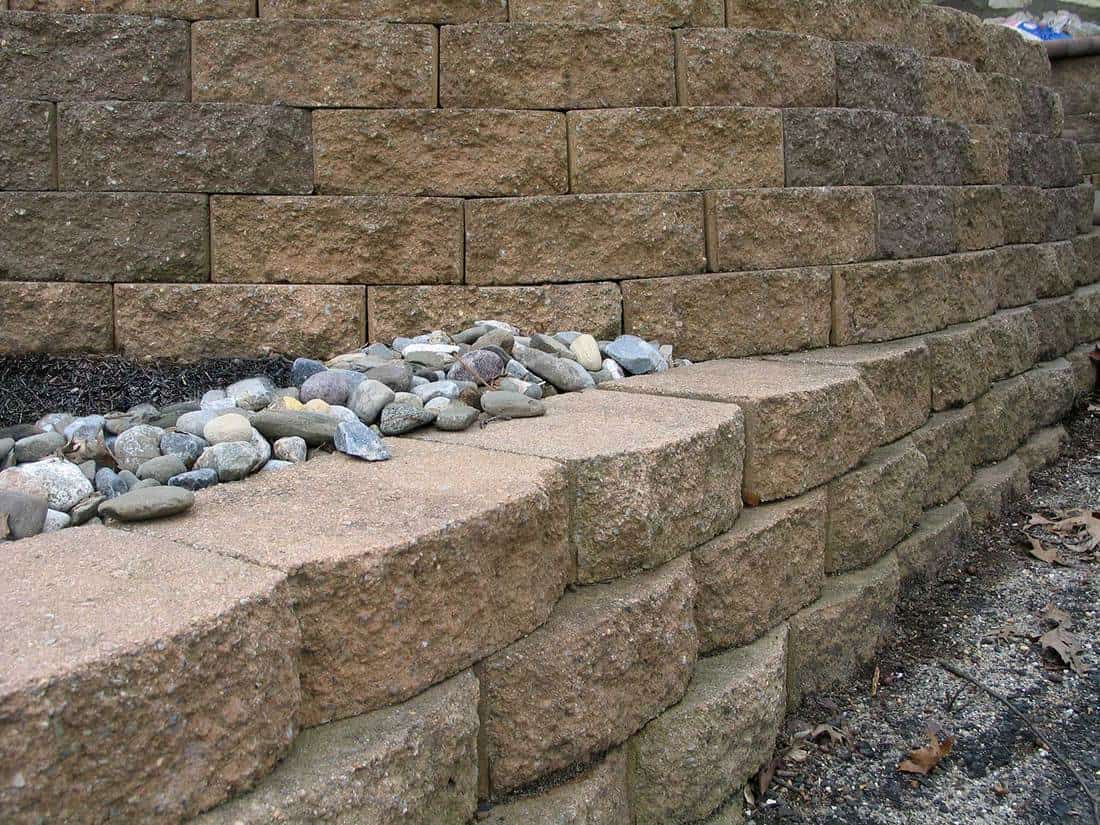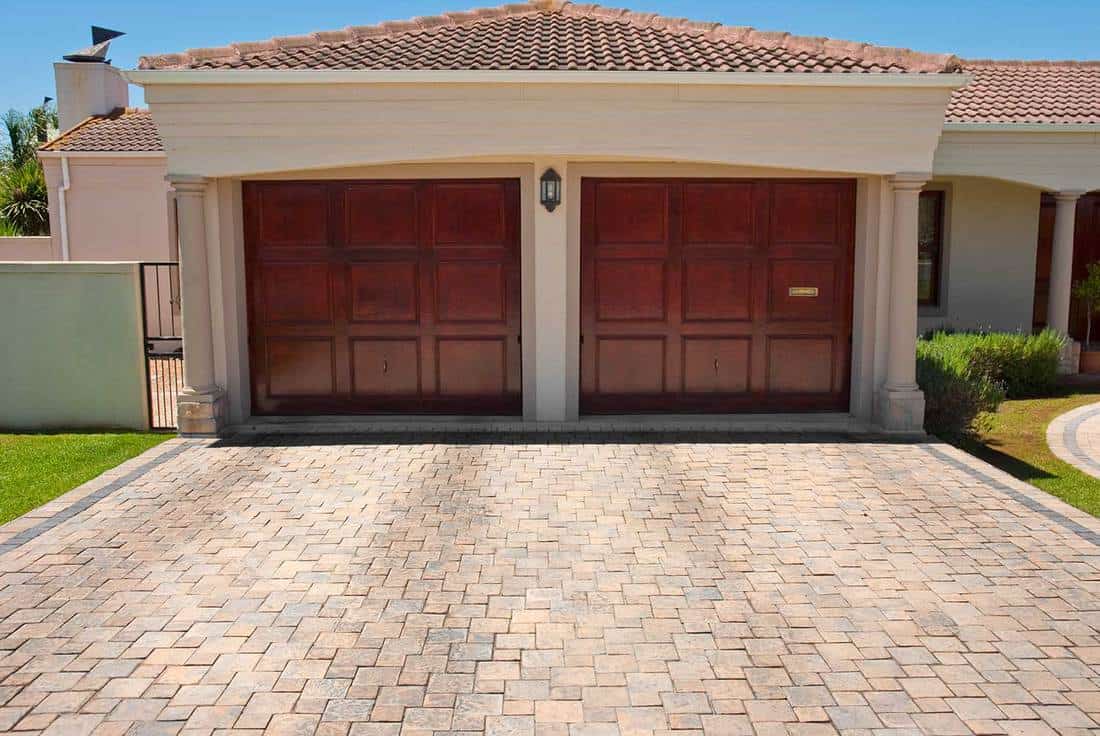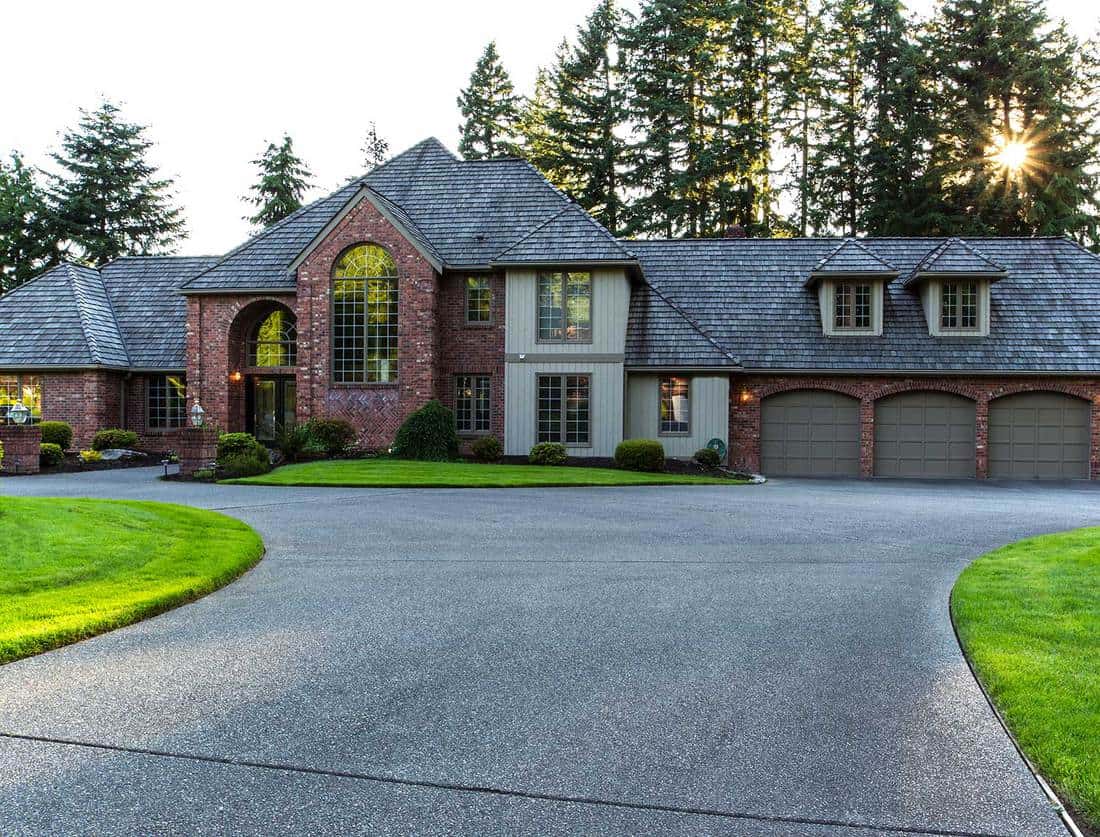Your driveway is an integral part of your home and landscape. It should be practical and durable and complement the appearance of your house and lawn. If you're considering building a new driveway or your existing drive needs work, you may be wondering how to create the best transition between your driveway and lawn. We've done the research, and we can tell you all you need to know!
Ideally, the edges of a driveway should be level with the lawn. Installing edging or a border protects both the driveway and the lawn. The best border materials include:
- Belgian blocks
- Brick pavers
- Stacked stone
- Concrete: flat, molded, patterned, or curb
- Cedar pickets
- Railroad ties
- Metal edging
- Plastic or rubber edging
Each of these border materials has advantages and disadvantages, and each works best with certain types of driveways. In the remainder of this article, we'll discuss each type of edging/border material in detail. We will also examine the best ways to protect gravel and asphalt driveways. And we'll describe the function of a driveway apron. Keep reading to learn more!
![A large concrete driveway to a home, Should The Driveway Be Higher Than The Lawn? [And What Type Of Border To Use!]](https://homedecorbliss.com/wp-content/uploads/2021/04/Should-The-Driveway-Be-Higher-Than-The-Lawn.png)
Best Borders For Driveways
Installing a border or edging along your driveway can be helpful in several ways:
- A border provides a visual cue or a physical barrier to keep drivers from going off the edge of the driveway, which can damage the lawn and the edge of the drive.
- You can select border materials that complement your home and landscaping style, adding to the overall ambiance of your property.
- Both borders and edging create a clear visual division between your lawn and driveway.
- Edging and some types of borders also help keep grass and weeds from growing into your drive.
- If you have a gravel drive or parking area, certain types of edging and border keep the gravel from spilling out into the lawn.
Belgian Blocks
These light-gray rough-hewn stone blocks add a classic look that goes well with vintage homes. Belgian blocks are beautiful bordering brick, cobblestone, or gravel driveways. Because their surfaces are rough, Belgian blocks are generally not installed flush with the ground where people might stumble while walking on them. Instead, they work best as a raised border, providing both a visual and a physical break between the driveway and the lawn.
We sometimes add affiliate links and content that was curated and created by our team with the help of advanced ai tools to help showcase the best design styles.

Brick Pavers
A driveway border of brick pavers also imparts an upscale, classic look to your landscaping. Brick pavers are more versatile than Belgian blocks because they come in multiple shades and styles. A darker brick border on a light-colored concrete driveway makes a dramatic visual statement; similarly, light-gray concrete bricks can provide an attractive dividing line between an asphalt drive and its surrounding lawn. You can even create a brick border on a brick driveway by arranging the border pieces in a different pattern from those in the drive. Borders of brick can be flat or raised.

Stacked Stone
Stacked stone creates a stylish, natural-looking border. Because it looks best when at least four rows of stone shards are stacked atop each other, it is typically used to construct retaining walls in areas where the driveway is lower than the surrounding yard. Stacked stone driveway borders also can take the form of small raised beds with shrubs or other plantings. They look best with driveways of gravel, asphalt, or concrete within naturalized landscaping.
Click here for stacked stone on Amazon.
Concrete
Concrete is an inexpensive and surprisingly versatile material for driveway borders. It is strong and durable, and it can be formed in a variety of colors, shapes, heights, and textures. A flat, white concrete border makes an attractive complement to a driveway of asphalt or brick. You may also use molded or patterned concrete or install a concrete curb, as described below.
Molded
If you'd prefer a three-dimensional concrete border, you can purchase pre-fabricated sections or create your own border using molds. Molded concrete borders come in various shapes: scalloped, dental, stone-shaped, and many more. If you construct your own border, you can also tint the concrete to any color you desire. Three-dimensional borders work well with gravel or loose stone driveways, as it provides a visual break between driveway and lawn and keeps the gravel from scattering into the lawn.
Click here for concrete border mold on Amazon.
Patterned
If you have a concrete driveway, you can make a striking statement with a border of colored or patterned orte. These borders are flat; they visually separate the driveway from the lawn and add a modern, sophisticated look to the landscaping. Dramatic patterned concrete drives and borders work well with modern brick, stone, and stucco homes.
Click here for a concrete pattern stamp on Amazon.
Curb
In rare cases -- primarily if your lawn is higher than your driveway -- you may need to install a concrete curb. A curb will stop soil from eroding and spilling onto your driveway; it will also effectively keep cars from driving off the side and into the lawn. Curbs may also assist with drainage, assuming your driveway is properly sloped: the concrete curb will channel rainwater down the driveway to the street, where it will flow into the storm sewer.

Click here for concrete curb tool on Amazon.
Cedar
A short, picket-fence-style border of cedar makes an attractive alternative to concrete and stone. Cedar creates a natural but sophisticated look that complements driveways and parking areas of gravel and loose stone. This type of border is effective only for its visual impact: the gaps between the pickets will allow gravel to filter through, and the fencing is not strong enough to stop a vehicle from driving over it.
Click here for cedar driveway edging on Amazon.
Railroad Ties
Railroad ties are the ultimate driveway border for creating a rural or rustic look. They can be used in a single layer or stacked atop each other and bound together with metal braces for stability. Railroad ties provide a visual divide and a strong physical barrier that prevents driving onto the lawn. They are most often used with gravel, loose stone, or plain dirt driveways; however, they can also border concrete or brick drives.
Metal Edging
Metal borders are most often used as edging, driven into the ground, and nearly invisible. They provide a sharp, clean division between a cultivated lawn and a driveway of concrete or asphalt. Additionally, like plastic landscape edging, when driven deep into the soil, they reduce the spread of grass and weeds into the driveway by cutting off the access of roots. Metal edging is most often used in highly manicured landscapes where precise definition between grass and driveway is important.

Click here for metal driveway edging on Amazon.
Plastic Or Rubber Edging
Non-metal landscape edging comes in a variety of forms, from relatively cheap black plastic to eco-friendly recycled rubber like the one shown below. Landscape edging is not technically a border because it doesn't provide a visual break between lawn and driveway or a physical barrier to drive-offs. However, it can serve as a tool for keeping grass and weeds from encroaching, thus maintaining a sharp, clean visual edge between your driveway and your lawn. It is best used along concrete or brick drives.
Click here for recycled rubber landscape edging on Amazon.
Retaining Wall
If all or part of your driveway is substantially lower than the surrounding ground, you may decide to build a retaining wall to border one or both sides of the drive. These walls can be built of Belgian blocks, brick, stacked stone, poured concrete, or railroad ties.

Do I Need Edging For A Gravel Driveway?
Although they are not required for a gravel driveway, installing edging and/or a border can be helpful in several ways. Basic plastic or metal edging, inserted several inches into the ground, prevents roots from spreading into the soil under the driveway. In addition, some edging is designed with a 1/2" or 1" lip that sits above ground, which can serve to keep gravel from spilling over into the lawn. A raised border is even more effective at keeping the gravel within the confines of the driveway.
How Do I Protect The Edges Of My Asphalt Driveway?
The edges of asphalt driveways slant down at a 45-degree angle to the ground. This renders that portion of the driveway thinner and thus more vulnerable to damage under the weight of vehicles that drive off the edge. Installing a border of brick, Belgian block, or concrete helps to support the structure of the driveway. It also provides a visual aid to help motorists avoid driving off the edge. As an alternative to a border, some homeowners install special metal edging that invisibly supports the drive's structure.
What Is The Purpose Of A Driveway Apron?
The apron is the section of the driveway that connects to the street. Its main functions are to make the transition from street to driveway easier and facilitate rainwater drainage. In areas with sidewalks, zoning typically requires each driveway to have an apron that extends from the edge of the sidewalk to the street.
The apron is made of the same material as the driveway and is usually the same width; however, in some cases, it is wider than the drive. In fact, the only way to tell the difference between the apron and the rest of the driveway is that the apron has a sharper angle of decline.
In Closing
Protecting your driveway and integrating it into your property's overall look help keep your home looking great and functioning efficiently. By installing edging and/or a border along your driveway, you can not only maximize its functionality but also increase your home's curb appeal and value.
You may also enjoy:







